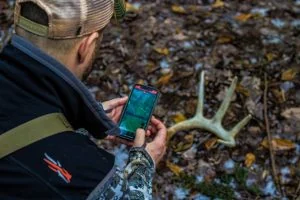WINNING AFTER THE SEASON ENDS

It’s no secret that the most consistent, big buck killers are the ones whose season never ends! This trend can be found within these select individuals, year in and year out and when everyone else hangs up their bows, puts away their stands and trail cameras and starts thinking about baseball and fishing, these guys are already planning the attack on next years whitetail season! Let’s dive into why this trend produces consistent results and why YOU should be following the same philosophy as these elite, whitetail bowhunters do, during the “Post” season to up YOUR odds for success next fall!


WINTER HERD MANAGEMENT
Once the hunting season has come and gone, there is still a lot to be desired for, if you’re a whitetail deer, or a deer hunter. With snow and cold, still very prevalent all across the Country from February through March, it’s no surprise that these animals must still survive the elements and brave the winter. During this time food, water and shelter are as important as ever to a Whitetail Deer’s life and especially the does, who are now carrying fawns.
From a land management position, I will be the first to tell you that if you are able to supplemental feed in your state, YOU should be doing so and for a magnitude of reasons. Supplemental feeding during this crucial time in a whitetail’s life will not only benefit your overall deer herd health, but also the generations of deer to come. I like to use a couple different mixes from Bigtine, which promote overall herd health by using a premier mix of nutrients like Crude Protein, Fat, Fiber, Calcium, Phosphorus, Potassium and also whole grains. These mixes will support antler growth and bone density, along with aiding in doe lactation during dawning season. These are VERY critical components to your deer herds overall health. Putting out this type of feed, at various spots around my hunting properties, will ensure that I have plenty of nutrition for my deer during the harsh winter months. Platinum, Triggered and Fortified blends are my favorites!
Something else that I love to do during this time of the year, that drastically benefits my deer herd, is frost seeding my food plots. Food Plots are a very critical component to my deer hunting arsenal and provide not only a great place to hunt over and around, but more importantly, they provide a nutritious food source for my whitetails throughout the year. During the late winter and early spring, a great way to jumpstart your perennial food plots, or to just add some clover to an already existing food plot area, is to frost seed. Frost seeding is the method of spreading seed, Foundation Clover is my seed of choice, to jumpstart growth and provide your food plot with a more lush and thick layer of feed. This type of planting will yield a better food plot with more nutrients and feed for your deer and at a faster rate than if you waited until spring, or summer to plant. This is a great way to also thicken up spots, that grew in thin in your plot, or that have greater amounts of grazing pressure from your deer herd.

TRAIL CAMERA CONSENSUS
During this postseason time of year, I am very curious as to what my herd numbers look like, when it comes to my buck to doe ratio. I will use trail cameras placed in strategic locations (typically food sources) to try to give me a solid representation of the amount of deer that I have on the property. This is very important to a deer hunter because it gives us a solid representation of what our herd has for strengths and weaknesses. For example, I never want any of my properties to have a drastically improper buck to doe ratio. 3-1, 4-1, etc is very respectable, but I have had farms where that ratio was seven does to one buck, or even worse. This unbalanced ratio hurts the rut and makes for a poorly performing deer herd overall. Some properties will need the doe population to be thinned out drastically come fall, while others may be very stable and with a solid buck to doe ratio being present.
With trail cameras being out during this time of the year I am also able to figure out which bucks have made it through the hunting seasons. By gaining pictures and the intel from these pictures, I can start to piece together certain clues about specific bucks and their patterns and tendencies. For example, I will pay very close attention to the many details that each photo gives me of a specific buck. Things like weather patterns, direction of travel, moon phase, barometric pressure and the time of day are all clues that I will start to build on with every picture taken of a specific buck. These consensus via my trail cameras, will let me know which properties hold the most bucks, need management practices like doe harvest to take place and allow me to figure out where my time must be spent the following fall, if I want to hunt a buck of the certain caliber that I desire. These are all pieces to the “BIG” puzzle.


POST SEASON CLUES
In my opinion, the single best thing that I ever started doing to heighten my mature buck success was postseason scouting and lots of it. During the winter and early spring, all of the clues for the past fall are still very easy to see and dissect. All it takes is a little bit of know-how and hard work! What I like to do on my properties and pieces of land that I bowhunt, is to put boots on the ground across the whole property, while paying very strict attention to all of the sign!
What this scouting allows me to do is to see exactly how the deer use, travel through, bed, feed and rut on my properties. Things like rub lines, scrape lines, bedding areas, heavily used game trails, feeding areas and water sources can all be seen and observed, during this time to give us clues to what the deer were doing during the hunting season. A prime example of this would be bedding areas!
It’s no secret that as a hunter, I do not want to disturb a bedding area during the hunting season, for fear of blowing the deer out. But, I do want to understand where the good bedding areas are and how deer come into and out of them. So right after the season is a perfect time to dive into these areas and scout them heavily! Pushing the deer out now will not hurt our chances during the hunting season come fall, so we do not need to worry about that! Using mapping apps like OnX for example, I will mark everything that I see in these bedding areas and make notes to go back and look on. This helps me understand how to hunt a property based on where a lot of deer like to bed.
I will also mark any rubs, trails and scrapes that are found on these properties as well, because these are clues that paint the picture on how deer use this area. Also, mark down where your oak trees are located and if any of those trees dropped acorns late! These can be super hot spots to hunt come next October and November and you do not want to forget where they are located and what sign was around them.
Throughout the entire property, I will make notes and mark any sign that I find and this will without a doubt make it easier for me to understand how deer use this property. This now allows me to have a better understanding of where deer like to be and where they do not. All in all, post season scouting is a great way to “connect the dots” from last hunting season and to start making your plans for the upcoming season. Things like food plot locations, trail camera locations and stand locations can all be found during this time of the year, while utilizing the fresh fall sign that is left behind. Do NOT sit on the couch and watch College Basketball all winter and spring, instead get out there and put some boots on the ground and find the clues left behind!



SHED SEASONS SECRETS
Another thing that I love to do during this postseason is shed hunt. Shed hunting is not only fun, but it also provides me with the ability to see which bucks made it through the winter and are living around my hunting areas. I absolutely love to find deer antlers and every time that I find a shed I will mark its location and make notes on what was around it. Things like food sources, bedding locations and sign will be marked down so I can try to understand the “why” behind why this buck was here when he dropped his antler. By trying to answer the “why” we can better understand how this buck uses the area and what his needs are.
For example, if I find a shed in a bedding area, or thicket I am immediately asking myself why was this buck here? During the winter, more times than not, buck’s will bed on south facing slopes because they receive the most sunlight. Typically, there will be a good source nearby as well, which is something I want to make note of! Maybe it’s a late producing oak stand on a nearby ridge, or a bean field that was combined late by the local farmer? Regardless, these are all clues that tell me more about this buck and why he was here. Sure, I love to just find sheds, BUT there is always more than just what meets the eye!
If YOU want to up your odds of success on a mature buck come fall, take the time and put in the work NOW and you will see your success rates go up, I’ll guarantee it!
